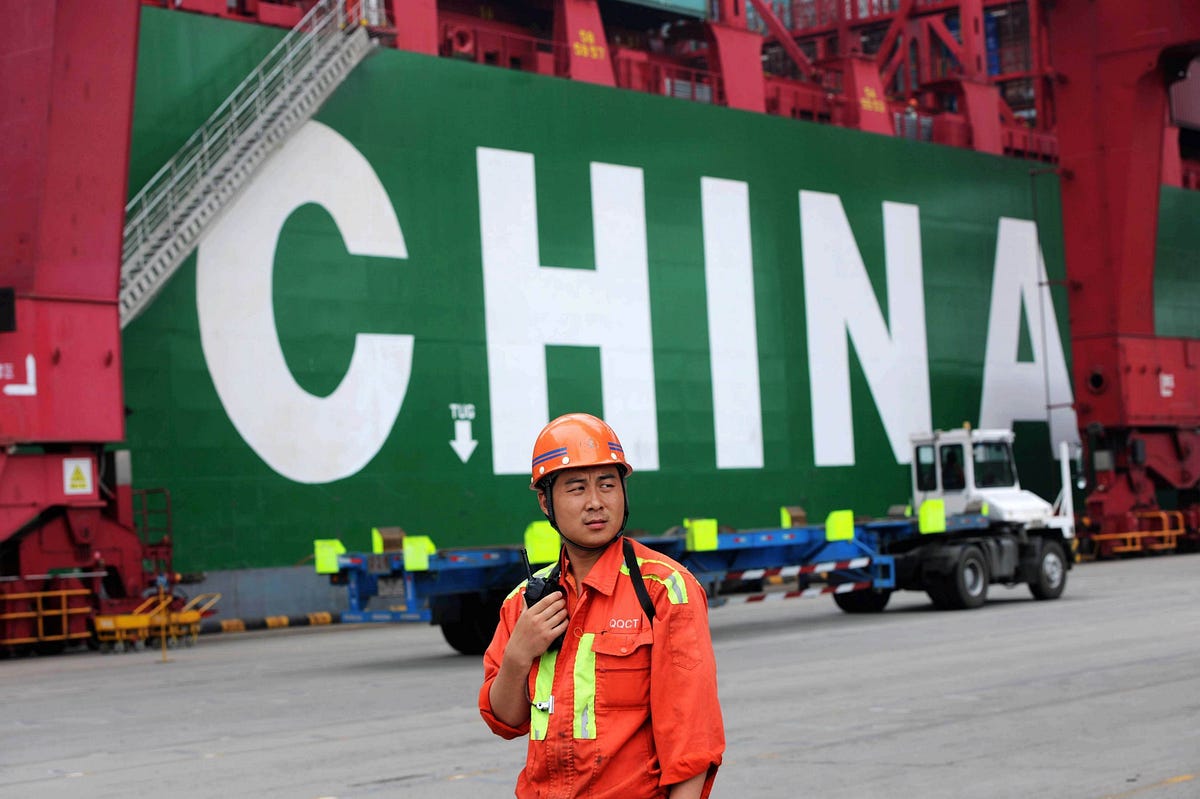China’s Economic Pivot: Implications of the Shift to Domestic Consumption and Technological Self-Sufficiency
In a strategic maneuver aimed at enhancing its economic resilience, China is transitioning from its traditional export-oriented growth model to prioritize domestic consumption and technological self-sufficiency. This shift, driven by geopolitical tensions, global economic uncertainties, and a quest for greater autonomy, has significant implications for the global economy and the power dynamics in key industries.
Enhancing Domestic Consumption
Central to China’s economic strategy is the stimulation of domestic consumption to mitigate reliance on external demand. Household consumption expenditure accounted for 39.2% of China’s GDP in 2022, an increase from 35.9% in 2015 . Despite the challenges posed by the COVID-19 pandemic, retail sales of consumer goods — a critical indicator of domestic consumption — grew by 4.5% year-on-year in 2023 .
This strategic pivot to bolster internal market demand is a response to the U.S.-China trade war and broader geopolitical tensions that have disrupted global supply chains. By strengthening its internal market, China aims to shield its economy from external shocks and foster a more self-sustaining economic model. The government has introduced various policies, including tax incentives and infrastructure investments, to stimulate consumer spending and support the expansion of domestic industries.
Pursuit of Technological Self-Sufficiency
Complementing its focus on domestic consumption, China is vigorously pursuing technological self-sufficiency, especially in strategic sectors such as semiconductors, advanced manufacturing, and renewable energy. The ‘Made in China 2025’ initiative, launched in 2015, sets ambitious targets for domestic production and innovation, aiming to reduce China’s dependence on foreign suppliers and enhance its global competitiveness.
In the semiconductor industry, critical for a wide array of products, China has made substantial progress. Investment in semiconductor research and development reached $15 billion in 2023, up from $10 billion in 2022 . This investment has facilitated notable achievements, such as the development of China’s first 7nm chip by Semiconductor Manufacturing International Corporation (SMIC) in 2023 .
China’s renewable energy sector has also experienced significant growth, driven by domestic demand and a commitment to reducing carbon emissions. In 2023, China’s renewable energy capacity increased by 10%, with substantial investments in solar and wind energy projects . This not only positions China as a leader in the global transition to sustainable energy but also reduces its dependence on foreign energy sources.
Global Responses and Competitive Landscape
China’s economic shift has prompted other major economies to develop strategies to mitigate potential disruptions and maintain their competitive edge. The United States, for instance, has enacted the CHIPS and Science Act, allocating $52 billion for semiconductor research and manufacturing . This initiative aims to bolster the U.S. semiconductor industry and decrease reliance on Chinese suppliers.
The European Union, recognizing the critical nature of sustainable investments, has launched the European Green Deal, mobilizing €1 trillion over the next decade to position the EU as a leader in green technology . This strategic initiative not only addresses environmental concerns but also aims to compete with China in the rapidly expanding renewable energy market.
Japan, a longstanding ally of the U.S., has also taken steps to diversify its supply chains and explore collaborative opportunities with China in green technology and digital infrastructure . This reflects Japan’s efforts to balance its economic interests with geopolitical considerations.
Implications for Global Trade and Supply Chains
China’s success in this economic transition will hinge on its ability to balance domestic growth with global trade dynamics, potentially reshaping the global economic landscape. As China decreases its reliance on exports and foreign suppliers, established supply chains and trade patterns could be disrupted, leading to shifts in global production networks and investment flows.
Furthermore, as China attains greater technological self-sufficiency in strategic sectors, it may gain leverage in negotiations with trading partners and reduce the influence of countries that have traditionally dominated global supply chains. This could escalate tensions and trade disputes, further complicating the already complex geopolitical landscape.
By 2025, China’s domestic market is projected to account for 45% of its GDP, up from 39.2% in 2022 . This increasing internal demand may create new opportunities for foreign companies looking to enter the Chinese consumer market, but it also presents challenges for those heavily reliant on exports to China.
In conclusion, China’s pivot towards domestic consumption and technological self-sufficiency represents a fundamental shift in the global economic order. As the world’s second-largest economy navigates this transition, the implications will resonate across industries, supply chains, and geopolitical alliances. Businesses, policymakers, and investors must closely monitor these developments and adapt their strategies accordingly, as the outcomes of China’s economic pivot will significantly influence the trajectory of the global economy in the coming years.









